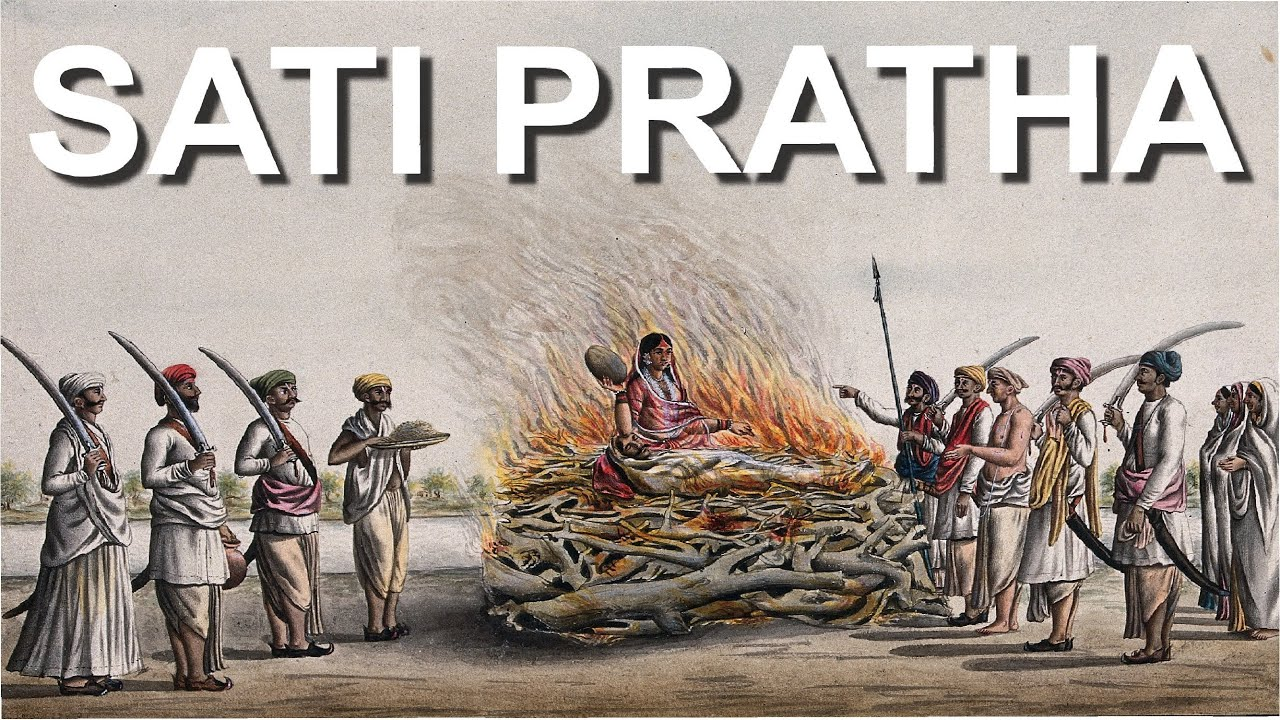Sati Pratha and its implications

Sati Pratha
Sati Pratha, or the practice of self-immolation at the death of the husband, has been a source of controversy and misconceptions for a long time. While some preach that the practice was compulsory, others try to outright disown the practice’s existence or say that it was an interpolated practice and wasn’t part of religious rituals. This discourse aims to clear confusion regarding this less discussed aspect of dharma.
Parashara Smriti on Sati Pratha
The Parashara Smriti Adhyaya 4 shlok 32 states that if a wom an follows her departed lord by burning herself on the same funeral pile, she will dwell in heaven for as many years as there are hairs on the human frame.
However, the same Parashara Smriti Adhyaya 4 shlok 31 states clearly that if a woman has led a continent life after her lord departed this life, she wins a region of bliss after her death, like the well-known male observers of a celibate life.
The Manusmriti Adhyaya 5 shlok 160 states that a virtuous wife who, after the death of her husband, constantly remains chaste, reaches heaven, though she has no son, just like those chaste men.
The Vishnu Smriti Adhyaya 25 shlok 14 states that after the death of the husband, the wife has two options: to either preserve her chastity or to ascend to the funeral pyre along with her dead husband.
Agni Puran
The Agni Puran Adhyaya 222 Shlok 223 states that the wife who practices austerities and self-control, preserving her chastity after the death of her husband herself, goes to heaven after her death, as does the wife who ascends to the funeral pyre with her husband. This makes one thing clear: while the practice of self-immolation by ascending the funeral pyre at the time of death of a husband is indeed a pratha that’s accepted, it is not compulsory; in fact, it’s also allowed to not perform this act and remain chaste till death as a viable alternative. This is seen well in the case of the wives of Pandu. At his death, while Madri went on the pyre with her deceased husband, Kunti remained back and well alive, showing the fact that both verdicts are equally valid.
Manusmriti on Sati Pratha
There are several verses in Manusmriti Adhyaya 9 that talk of the circumstances under which a woman may remarry or even abandon her husband. If the husband went abroad for some sacred duty, she must wait for him eight years; if he went to acquire learning or fame, six years; if he went for pleasure, three years, after which she is allowed to remarry. Also, she is allowed to remarry someone who shows aversion towards a mad or outcast husband, a eunuch, one destitute of manly strength, or one afflicted with such diseases. In these cases, she can’t be deprived of her share of the property either. Apart from all these, there’s also the view of tantras, especially Kaulamarga, that needs to be discussed.
Mahanirvan Tantra
According to Mahanirvan Tantra Ullash 10 Shlokas 79-80, a woman should never be burned alive with her dead husband; a woman who, in her delusion, ascends the funeral pyre with her deceased husband actually goes to Narak. One must understand that while the views of the smritis and puranas are for the general people, the rule given here is with respect to dikshit tantrikas and must be followed by them. To conclude, while the practice of sati has indeed been accepted as a valid practice, it is not compulsory, and it is forbidden in tantramarg. The rules vary according to achara; the definition of dharma adharma varies according to achara; thus, one should strive to follow what is dharma for them with respect to varnashrm and their achara.